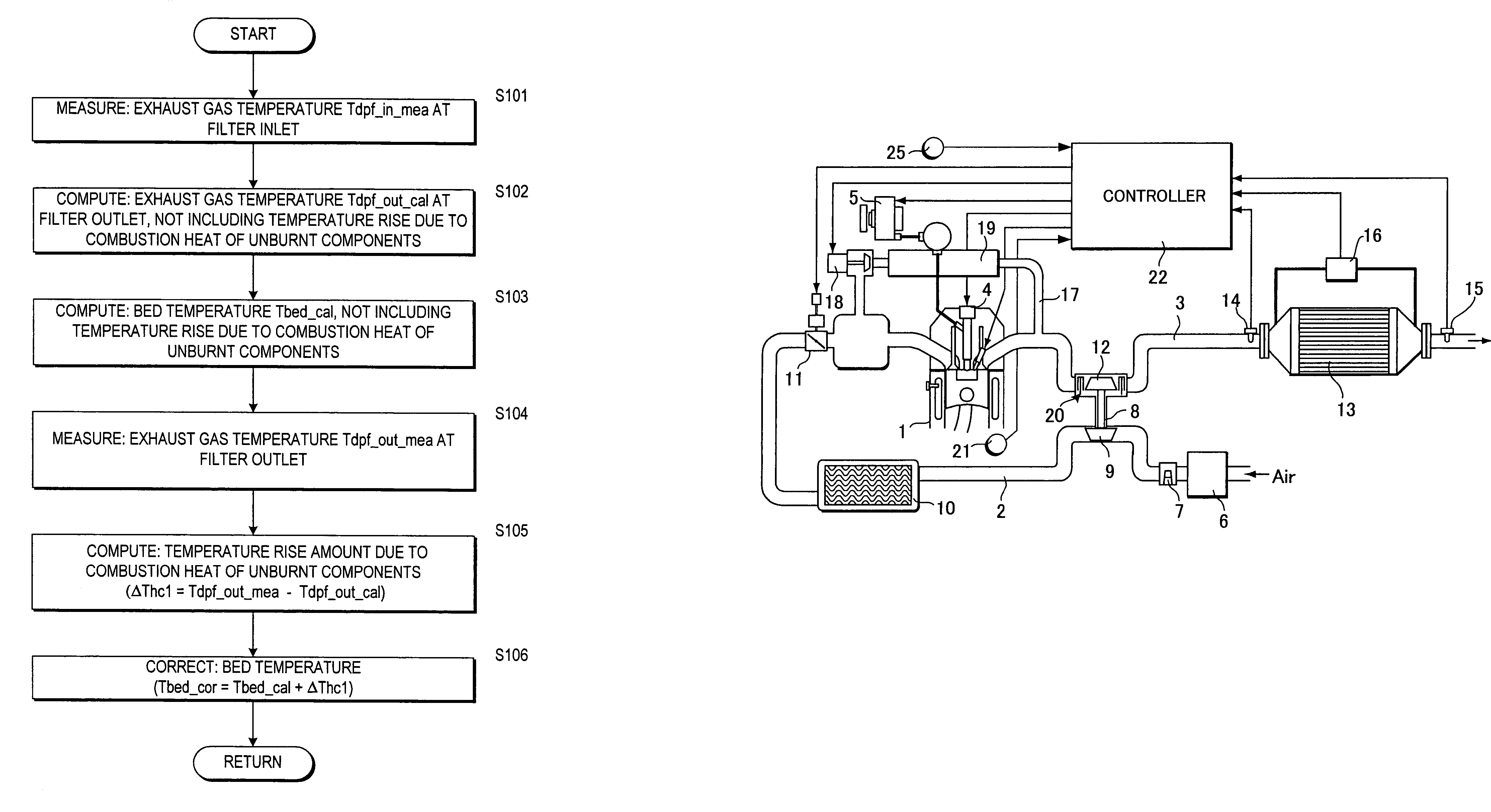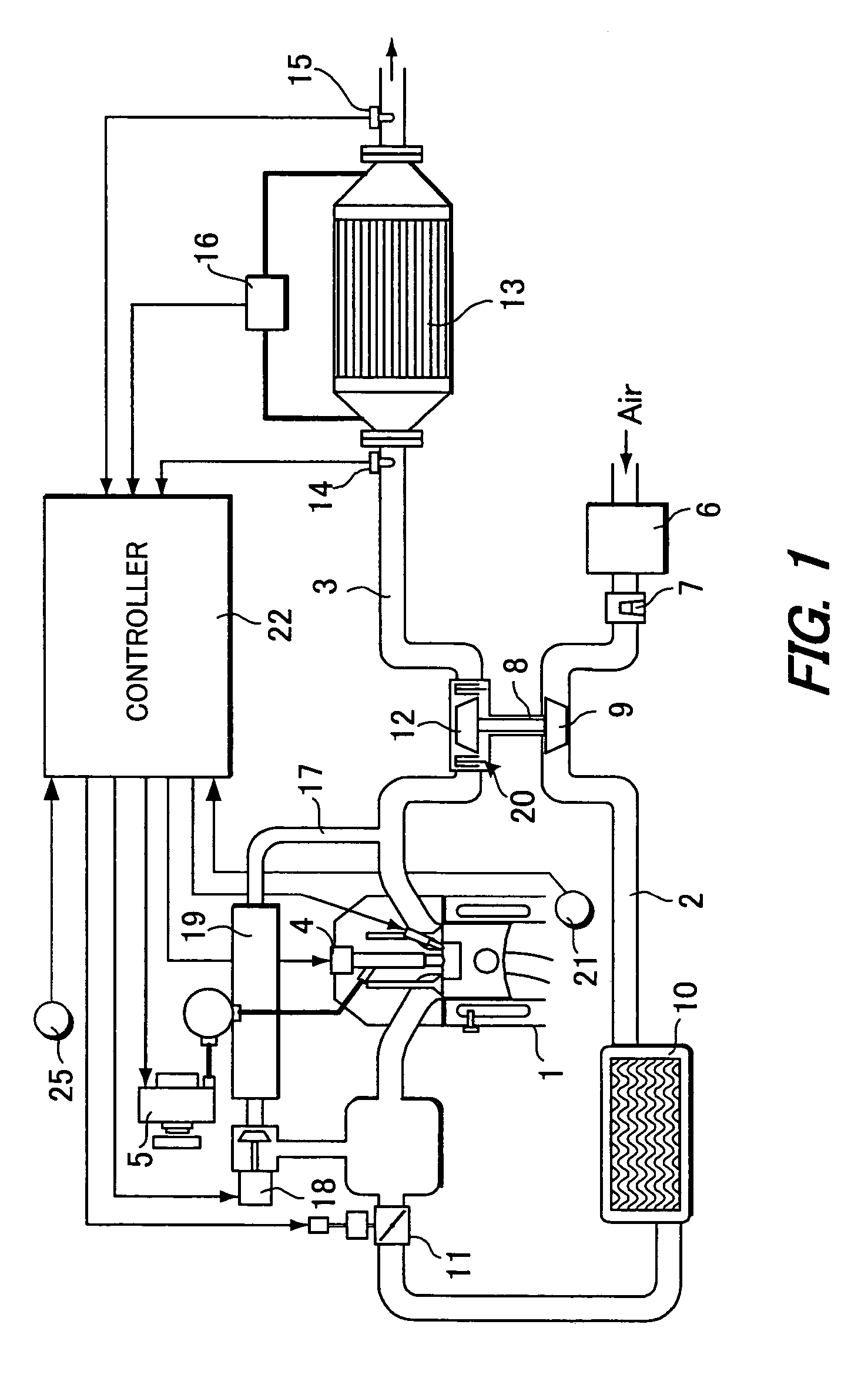Filter regeneration control
a filter and regeneration control technology, applied in the direction of electrical control, electrical control, exhaust treatment electric control, etc., can solve the problems of filter deterioration, too high bed temperature in regeneration, and inability to perform suitable regeneration control of bed temperature, so as to avoid deterioration of filter, improve the accuracy and performance of regeneration control
- Summary
- Abstract
- Description
- Claims
- Application Information
AI Technical Summary
Benefits of technology
Problems solved by technology
Method used
Image
Examples
first embodiment
[0023]Referring to FIG. 2, the control routine relating to the bed temperature computation performed by the controller 22 will now be described. This control routine is periodically performed, for example by a timer interrupt at a fixed interval of 10 milliseconds.
[0024]In a step S101, an exhaust gas temperature Tdpf_in_mea of the filter inlet side is measured based on a signal from the temperature sensor 14.
[0025]Next, in a step S102, an exhaust gas temperature Tdpf_out_cal on the filter outlet side assuming that there is no combustion of unburnt components, is computed using the measured inlet temperature Tdpf_in_mea. The outlet temperature Tdpf_out_cal can be estimated from the engine running state and measured inlet temperature Tdpf_in_mea. For example, the fuel injection amount Q and engine rotation speed Ne showing the the engine running state, and the inlet temperature Tdpf_in_mea, are used as parameters, and the outlet temperature Tdpf_out_cal is calculated by referring to a...
second embodiment
[0034]Referring to the flowchart of FIG. 4, the control routine relating to the bed temperature computation performed by the controller 22, will now be described. The processing of the step S101-step S103 is identical to that of FIG. 2, and the outlet temperature Tdpf_out_cal and the bed temperature Tbed_cal which do not contain the temperature rise due to the combustion heat of unburnt components are computed based on the measured inlet temperature Tdpf_in_mea.
[0035]This embodiment differs from the first embodiment in that a temperature rise amount ΔTch2 due to the recaction of unburnt components is computed from the unburnt component amount.
[0036]In a step S204, the discharge rate of HC and CO which are unburnt components is first calculated by referring to a map. The discharge rate (which is a discharge amount in a fixed interval) of unburnt components is determined by the engine running state. Therefore, a map which gives the discharge rate of unburnt components from an engine r...
PUM
 Login to View More
Login to View More Abstract
Description
Claims
Application Information
 Login to View More
Login to View More - R&D
- Intellectual Property
- Life Sciences
- Materials
- Tech Scout
- Unparalleled Data Quality
- Higher Quality Content
- 60% Fewer Hallucinations
Browse by: Latest US Patents, China's latest patents, Technical Efficacy Thesaurus, Application Domain, Technology Topic, Popular Technical Reports.
© 2025 PatSnap. All rights reserved.Legal|Privacy policy|Modern Slavery Act Transparency Statement|Sitemap|About US| Contact US: help@patsnap.com



